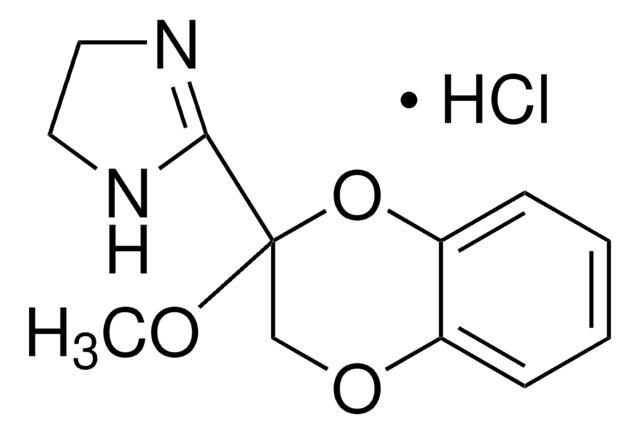1.05632
TLC plates, Cellulose
pkg of 100 plates, plate L × W 10 cm × 10 cm, glass support
Sinónimos:
Cellulose Thin Layer Chromatography Plates
Iniciar sesiónpara Ver la Fijación de precios por contrato y de la organización
About This Item
UNSPSC Code:
41115711
NACRES:
NB.21
Productos recomendados
material
cellulose matrix
glass support
Quality Level
feature
binder Organic Polymer
fluorescent indicator: no
packaging
pkg of 100 plates
technique(s)
thin layer chromatography (TLC): suitable
layer thickness
80-120 μm
plate L × W
10 cm × 10 cm
storage temp.
2-30°C
Categorías relacionadas
General description
100 Glass plates 10 x 10 cm
Our cellulose plates are used to analyze polar substances. An organic sorbent, cellulose is perfect for separating hydrophilic substances by partition chromatography. Typical applications include the analysis of amino acids, carbohydrates, and phosphates as well as nucleic acid and nucleic acid derivatives. We offer cellulose plates in two grades: TLC for conventional and HPTLC for demanding, high-performance separations.
Application
- A Purification and In Vitro Activity Assay for a (p)ppGpp Synthetase from Clostridium difficile.: This article details the purification and activity assay of a synthetase enzyme using cellulose TLC plates, highlighting its significance in microbial research (Pokhrel et al., 2018).
- Production of Xanthanases by Paenibacillus spp.: Complete Xanthan Degradation and Possible Applications.: The study investigates xanthan degradation by enzymes produced by Paenibacillus spp., utilizing cellulose TLC plates for analysis, indicating potential industrial applications (Ashraf et al., 2017).
- Thin-layer chromatography combined with diode laser thermal vaporization inductively coupled plasma mass spectrometry for the determination of selenomethionine and selenocysteine in algae and yeast.: This research combines TLC with advanced mass spectrometry techniques to analyze selenium compounds in biological samples, showcasing the utility of cellulose TLC plates in bioanalytical chemistry (Bednařík et al., 2018).
- Analysis of low active-pharmaceutical-ingredient signal drugs based on thin layer chromatography and surface-enhanced Raman spectroscopy.: This study demonstrates the combination of TLC and Raman spectroscopy for the analysis of pharmaceuticals, emphasizing the effectiveness of cellulose TLC plates in drug analysis (Li et al., 2016).
- Fast assessment of planar chromatographic layers quality using pulse thermovision method.: This article presents a method for assessing the quality of chromatographic layers, including cellulose TLC plates, using thermovision techniques, which can enhance analytical reliability (Suszyński et al., 2014).
Linkage
Replaces: 5632-5; 5632
Analysis Note
Layer thickness: 80 - 120 µm
Deviation of layer thickness per plate: ≤ 30 µm
Aminoacid test
hRf-values
- L-serine, amino acid test:
20 - 30
- L-threonine, amino acid test: 29 - 36
- L-alanine, amino acid test: 30 - 40
- L-methionine, amino acid test: 49 - 60
- L-phenylalanine, amino acid test: 59 - 70
- L-leucine, amino acid test: 66 - 76
typical value determined on a plate
Eluent: 1-Butanol/ acetone/ acetic acid/ water (35/35/7/23 v/v/v/v) twice developed
Deviation of layer thickness per plate: ≤ 30 µm
Aminoacid test
hRf-values
- L-serine, amino acid test:
20 - 30
- L-threonine, amino acid test: 29 - 36
- L-alanine, amino acid test: 30 - 40
- L-methionine, amino acid test: 49 - 60
- L-phenylalanine, amino acid test: 59 - 70
- L-leucine, amino acid test: 66 - 76
typical value determined on a plate
Eluent: 1-Butanol/ acetone/ acetic acid/ water (35/35/7/23 v/v/v/v) twice developed
Certificados de análisis (COA)
Busque Certificados de análisis (COA) introduciendo el número de lote del producto. Los números de lote se encuentran en la etiqueta del producto después de las palabras «Lot» o «Batch»
¿Ya tiene este producto?
Encuentre la documentación para los productos que ha comprado recientemente en la Biblioteca de documentos.
Nuestro equipo de científicos tiene experiencia en todas las áreas de investigación: Ciencias de la vida, Ciencia de los materiales, Síntesis química, Cromatografía, Analítica y muchas otras.
Póngase en contacto con el Servicio técnico




![CDP-Star® Disodium 2-chloro-5-(4-methoxyspiro {1,2-dioxetane-3,2′-(5′-chloro)tricyclo[3.3.1.13,7 ]decan}-4-yl)-1-phenyl phosphate](/deepweb/assets/sigmaaldrich/product/structures/224/846/d08963f5-c8ba-42e6-b4f7-9ee7fd76d809/640/d08963f5-c8ba-42e6-b4f7-9ee7fd76d809.png)


